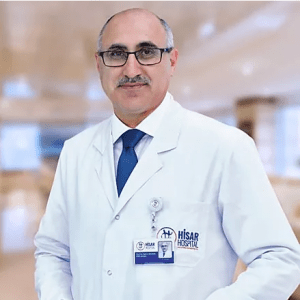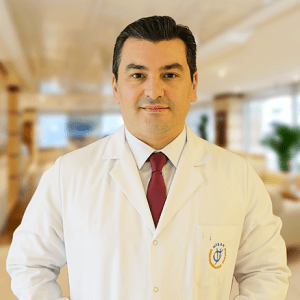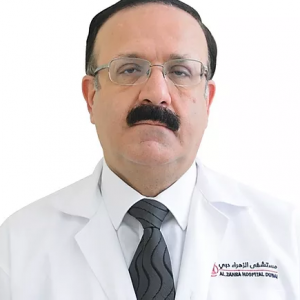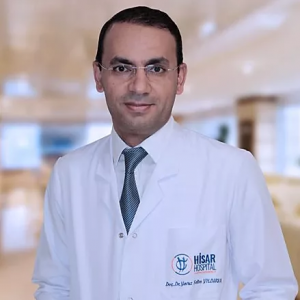Endoscopic scar excision with cauterization, cryosurgery, and serial electrosurgical resection has been used with limited success. The carbon dioxide laser can be useful for treating early stenosis with granulation tissue.
WHAT IS LARYNGEAL STENOSIS?
Laryngeal stenosis or stenosis of the larynx is the narrowing of the larynx (airway) at any level starting from the glottis until the trachea. Narrowing at the vocal cords is called glottis stenosis, and one that is just below the vocal cords is known as subglottic stenosis.
This airway obstruction results in a high-pitched noise during breathing called “stridor”, and this is a major symptom of the condition. Several problems can cause airway obstruction that results in stridor.
These problems include:
- Sear tissue in the larynx or trachea
- Vocal cord immobility
- A mass obstructing the airway
A build-up of scar or inflammatory tissue in the voice box or trachea can narrow your breathing passage. If both your vocal folds do not move, then they do not open during breathing. This situation can restrict the airflow through the voice box.
Obstruction of the airway can be caused by either of the following:
- A benign or cancerous tumor
- An inflammatory growth
- An infectious growth
The airway becomes narrowed due to other reasons also such as allergic reactions, causing the throat to swell–a bee sting, peanuts, antibiotics (like penicillin), blood pressure medicines (such as inhibitors, chemical burns, and reactions).
TREATMENT
Many different treatment options are available. The treatment option adopted for you is dependent on your diagnosis.
- Scar tissue in the voice box and/or tracks: Usually, surgery is needed to open up the airway so your breathing can improve. In rare cases, medications can be used to retard the inflammation process behind the obstruction.
- Vocal cord immobility: Treatment should be in line with the cause of the condition, but many times surgery is required to open up your airway.
- A mass obstructing the airway: A biopsy is often required and treatment depends upon the diagnosis.
There are treatments for all types of laryngeal stenosis. The treatment can be endoscopic or by external surgery. This decision is taken during an endoscopic examination. Sometimes, there could be multiple levels of stenosis, and in such a case, we can never think of decannulation if all levels have not been treated optimally. There are two main surgical operations used to correct subglottic stenosis:
- Laryngotracheal reconstruction (LTR)
- Cricotracheal resection (CTR)
Each of them can be performed in one or two stages, depending on the individual’s decision.
- Laryngotracheal reconstruction (LTR)
This is an expansion procedure for the airway performed by inserting cartilage grafts(taken from the rib, ear, or voice box). Over time, the expander cartilage becomes integrated into the tracheal subglottic walls, becoming part of the airway.
Single-stage LTR in the immediate post-operative period will need the child to have a nasal endotracheal tube and admission in the intensive care for 5-7 days. Surgeries done in 2 stages will have a stent (Monniers Laryngotracheal LT Mold) and a tracheostomy.
The LT Mold is to calibrate the expanded airway and stabilize the cartilage reconstruction. It is kept for some weeks to months depending on each case. It requires a separate endoscopic procedure to remove the stent. The tracheostomy is removed often successful decannulation trail.
- Cricotracheal resection (CTR)
CTR is more invasive and technically challenging. It excises the narrow portion of the airway and then connects the remaining normal diameter of the airway. This method is used in a more severe type of stenosis.
The CTR is usually single-stage, but could, however, be in the stages in certain conditions (children with cardiopulmonary and neurological comorbidities). The extended CTR is always in two stages. A third variety of the surgery is an extended CTR which combines the principles of airway expansion with a cartilage graft and cricotracheal resection.
RISK AND MORBIDITY
Overall, the trend in the management of glottis and subglottic stenosis is considered a low-risk therapy, it can reduce the chance of morbidity. BTS is a life-threatening condition caused mainly by prolonged intubation and/or tracheostomy.
Surgery is the treatment of choice. Unfortunately, due to the etiology of tracheal stenosis, the patients are often poor surgical candidates. tracheostomy, due to its inherent increased morbidity, mortality, and influence on social stigma, should be viewed only as a last resort.
MORTALITY RATE
The highest mortality rate was observed in CTR Patients younger than 1 month and those with intracardiac abnormalities. LTR complications include respiratory failure, cardiopulmonary arrest, and death. With tracheal dilation (84%), followed by T-tube placement (8%), resection (6%) for LTS offers a high rate of long-term tracheostomy-free survival.
Symptoms
• Apnea,
• Suprasternal and subcostal retractions
• Tachypnea, and dyspnea.
Causes
• Laryngeal stenosis (LS) is a congenital or acquired narrowing of the larynx causing airway compromise.
• The acquired causes may be due to endotracheal intubation, trauma, burns, inflammation, neoplasms, autoimmune disorders and collagen vascular disease.
FAQ
What causes laryngeal stenosis?
Acquired glottis stenosis is most commonly due to trauma secondary to endotracheal intubation. Other causes include caustic ingestion, infection (such as croup), foreign bodies, dermal trauma, and iatrogenic causes, due to surgery on the larynx.
Can subglottic stenosis be found?
To date, simple-staged laryngotracheal resection with primary end-to-end anastomosis has proved to offer the best option of a cure for benign subglottic stenosis, allowing a definite and stable high success rate.
What causes your airways to narrow?
Airway stenosis (or narrowing) is a narrowing of the airway, caused by malignant and benign tumors, congenital abnormalities, airway injuries, endotracheal intubation, tracheotomy, autoimmune diseases, and infections.
Can acid reflux cause tracheal stenosis?
Many authors have implicated gastroesophageal reflux disease (GERD) as a cause of idiopathic tracheal stenosis. A case of tracheal stenosis that improved with clinical treatment of GERD was reported by a research agency that a 44-year old woman had been admitted into their institution with dyspnea on exertion that had developed during two years.
What is the success rate of cricotracheal resection?
CTR and thryotracheal anastomosis, along with laryngotracheal reconstruction (LTR), have become the standard of symptomatic subglottic stenosis in the pediatric age group. However, the success rate in achieving decannulation or avoiding the tracheotomy approach is 90%.





























































































